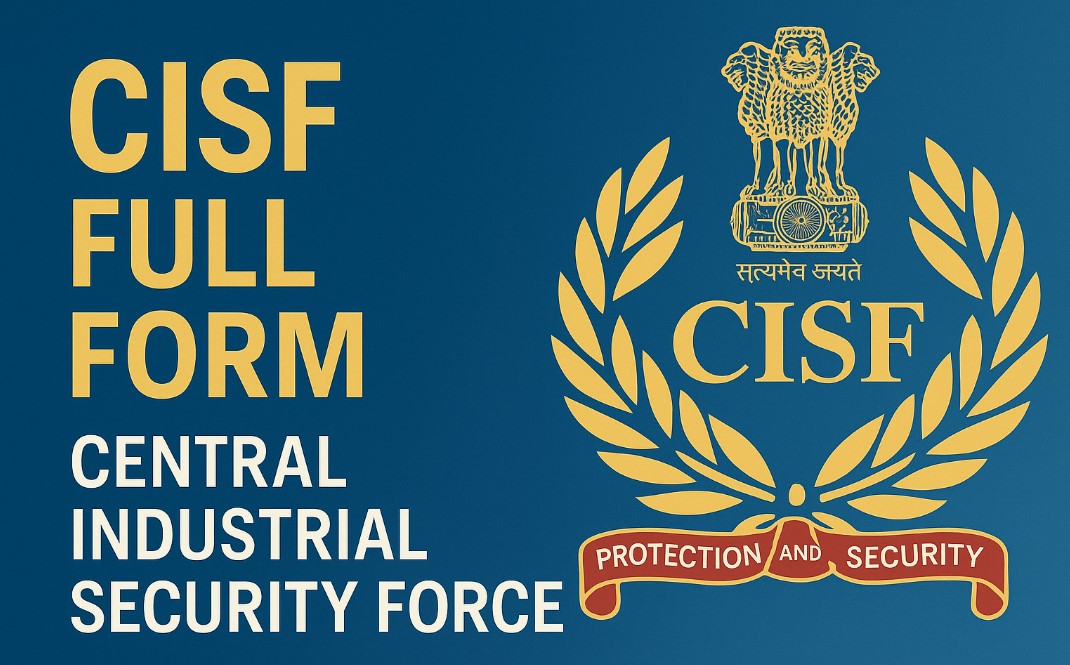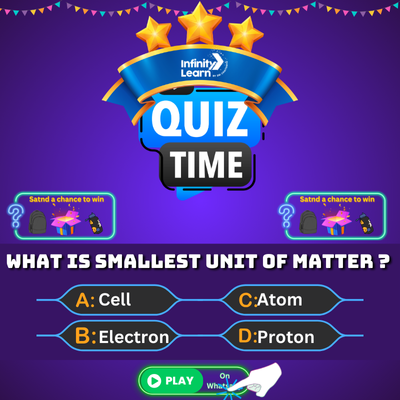Table of Contents
The Full Form of CISF is Central Industrial Security Force. India’s Ministry of Home Affairs oversees the Central Industrial Security Force (CISF), a central armed police force. The main goal of the CISF is to protect large organizations, whether they are privately held or state-owned.
Its responsibilities include providing airport security, protecting the Parliament complex, the Delhi Metro, and sensitive government buildings. In addition, CISF offers consulting services to other Indian government agencies and private sector companies. Security and fire safety consulting are included in the scope of CISF’s consulting practice.

CISF History
The CISF was set up on March 10, 1969, through a law passed by the Indian Parliament. At that time, it had around 1,88,000 members. As the name suggests, it was made to protect and guard important industries in the country.
In the beginning, there was a rule that only those industries fully owned by the central government could get protection from CISF. But later, this rule was changed. Now, even industries that are jointly run by the central government and private companies can get protection from CISF.
Do Check: List of all Important Full Forms
Central Industrial Security Force Overview
The CISF is one of India’s most disciplined security forces, ensuring the safety of critical national assets while adapting to modern security challenges. Here is an overview of the Central Industrial Security Force.
| Category | Details |
| Full Name | Central Industrial Security Force (CISF) |
| Motto | “संरक्षण एवं सुरक्षा” (Protection and Security) |
| Formation Date | 10 March 1969 (56 years ago) |
| Parent Agency | Ministry of Home Affairs, Government of India |
| Governing Act | Central Industrial Security Force Act, 1968 |
| Headquarters | New Delhi, India |
| Director General (DG) | Rajwinder Singh Bhatti, IPS |
| Jurisdiction | Pan-India (covers critical infrastructure, PSUs, airports, etc.) |
| Official Website | @cisf.gov.in |
CISF Rank Structure
The CISF has a hierarchical ranking system for its officers. These officers uphold the force’s operational efficacy and discipline by exercising command and leadership. The CISF Salary/Pay Level and Rank Structure are summarized here.
| CISF Rank | Equivalent Police Rank | Pay Level (as per 7th CPC) |
| Director General (DG) | Director General of Police (DGP) | Level 17 |
| Additional Director General (ADG) | Additional Director General of Police (ADGP) | Level 16 |
| Inspector General (IG) | Inspector General of Police (IGP) | Level 14 |
| Deputy Inspector General (DIG) | Deputy Inspector General of Police (DIGP) | Level 13A |
| Senior Commandant | Senior Superintendent of Police (SSP) / Deputy Commissioner of Police | Level 13 |
| Commandant | Superintendent of Police (SP) / Deputy Commissioner of Police (DCP) – Junior Administrative Grade | Level 12A |
| Deputy Commandant (Dy Comdt) | Additional Superintendent of Police (Addl. SP) – Senior Time Scale | Level 12 |
| Assistant Commandant (Asst Comdt) | Deputy Superintendent of Police (DSP) – Junior Time Scale | Level 11 |
CISF Organizational Structure
An Indian Police Service (IPS) officer with the rank of Director-General leads the Central Industrial Security Force, with the help of an IPS officer with the rank of Additional. Director-General. The force has a Fire Service Wing in addition to its nine sectors.
An IPS officer with the rank of Addl. Director-General oversees the Airport Sector with the help of an Inspector-General. Each airport has its own Field Formation Unit, which is part of the Airport Sector. A Deputy Inspector-General or Commandant leads units at large international airports, while a Deputy or Assistant Commandant leads units at smaller airports. An Inspector-General leads each of the other six Sectors, with a Deputy Inspector-General providing support.
A Deputy Inspector-General is in charge of each of the seven regional sectors, which are separated into zones. There are several units within each zone, all of which are commanded by a commandant (or, in the case of some major units, a DIG). A deputy commandant serves as the second-in-command of most units or as the commander of a smaller unit.
The Fire Service Training Institute (FSTI) and six other recruit training facilities are under the jurisdiction of Deputy Inspectors General, while the National Industrial Security Academy (NISA) is overseen by an Inspector General. In addition to having Dy Advisers from the Indian Audit and Accounts Service and Indian Civil Account Service, the CISF’s Financial Adviser was a Director-level Indian Revenue Service officer.
Also Check: CFT Full Form
CISF Objectives
CISF performs a wide range of functions beyond just guarding industries.The main goals of CISF are:
- Protect vital installations and industries.
- Ensure internal security during emergencies.
- Provide VIP security and fire services.
- Assist in disaster rescue and relief operations.
- Support in elections and law and order situations.
Also Check: BMT Full Form
CISF Recruitment
To ensure the safety and security of important installations in India, the CISF hires people for a variety of positions in several departments. CISF recruits personnel for various positions/vacancies through different CISF exams and processes:
| Posts | Mode of Recruitment |
| Constable | SSC GD (General Duty) Exam |
| Sub-Inspector (SI) | SSC CPO Exam |
| Assistant Commandant | UPSC CAPF Exam |
| Tradesman, Driver, Head Constable, etc. | CISF Recruitment Notifications |
CISF Eligibility Criteria
Candidates must fulfill specific eligibility requirements to apply for the CISF Head Constable Recruitment. A passing grade in Class 12 (10+2) from an accredited board is the necessary educational prerequisite. Applicants must be between the ages of 18 and 23.
Male candidates must be at least 160 cm, while female candidates must be at least 153 cm. To be measured, male candidates must have a chest that is between 81 cm (unexpanded) and 86 cm (expanded). There are no chest measurement requirements for female candidates.
CISF for Universities / Institution Security
The Central Government was requested by the then-Vice-Chancellor of Visva-Bharati University in Shantiniketan, West Bengal, in 2019 to station Central Industrial Security Force (CISF) officers on the university’s campus permanently. The Union Home Ministry approved the deployment of the CISF at Visva-Bharati University on November 13, 2019. It was also mentioned that a “board of officers” will soon be established by CISF to conduct a security evaluation of the Shantiniketan facility.
The Supreme Court of India ordered the CISF to be deployed to the R. G. Kar Medical College and Hospital in Kolkata on August 21, 2024, in response to the attack and vandalism carried out there at midnight on August 15, 2024.
Also Check: BMR Full Form
CISF Protection for the Corporate Sector and Non-Nationalized Industries
The CISF (Amendment) Bill, 2008, was passed by the Indian Parliament on 25 February 2009, authorizing the CISF to provide security to private and collaborative, cooperative establishments nationwide for a fee. The Bill also calls for the deployment of the CISF to protect Indian missions abroad and the involvement of the Indian military in UN peacekeeping missions. It was approved by the Rajya Sabha on February 19 and the Lok Sabha on February 25 of 2009.
On 31 July 2009, the Central Industrial Security Force (CISF) began providing security to the Infosys campus in Bengaluru, marking its first deployment at a private sector company. The Delhi Metro Airport Express Line, Mysuru’s Infosys, and the Reliance Jamnagar Refinery are among the private sector businesses covered by the CISF. The first CISF contingent deployed at Infosys Bengaluru was led by Assistant Commandant Manish Kumar Rai.
CISF for Parliament Security
The CISF took charge of the Parliamentary complex’s security after a security breach led to the withdrawal of the CRPF and Delhi Police in May 2024. Now, specially trained CISF commandos from the Special Security Group (SSG) handle the security, focusing on counterterrorism and VIP protection.
CISF for Airport Security
Previously, the state police of each state in India were in charge of airport security. But now, the Central Industrial Security Force is in charge. The CISF now has security jurisdiction over all Indian commercial airports. However, the idea of giving the CISF control over airport security was first put forth in the wake of the 1999 hijacking of Indian Airlines Flight 814.
The central government adopted this proposal in response to the September 11, 2001, terrorist attacks in the United States, which sparked security and safety concerns for all major nations worldwide, even though it was kept under wraps for the next two years. In February 2000, the CISF assumed control of the first airport, Jaipur. The majority of India’s commercial airports were subsequently placed under its jurisdiction.
CISF for Delhi Metro
Since 2007, the CISF Unit DMRC (Delhi Metro Rail Corporation) has been responsible for security on the Delhi Metro, taking over the duty from the Delhi Police. Officials from Delhi Metro and the CISF watch the feed from closed-circuit television cameras that are used to monitor trains and stations from their respective control rooms.
More than 3000 CISF staff have been deployed to address law and order issues within the system, in addition to the metal detectors, dog squads, and X-ray baggage inspection systems that are used to secure it. Regular security drills are conducted at trains and stations.
Women in CISF
Initially, only men were allowed to join the CISF. In 1992, Mrs. Asha Sinha became the first woman to lead a Central Armed Police Force as Commandant of Mazagon Dock. At that time, women were restricted to supervisory roles. Later, following suggestions from Parliamentary Committees on Women’s Empowerment, the Ministry of Home Affairs allowed women to serve as constables and combat officers in all five Central Armed Police Forces, including the CISF.
CISF Full Form FAQs
Can a 12th grader apply to be a CISF?
Applications for the CISF HCM recruitment process are open to all 12th pass candidates who are at least 18 years old.
Is the CISF job permanent?
Yes, for those who successfully finish their probationary period, CISF is typically regarded as a permanent position.
Can CISF remain with the family?
CISF members are typically permitted to remain with their families, particularly when assigned to peace areas.
Does UPSC cover CISF?
To fill the positions of Assistant Commandants (Executive) in the CISF, the UPSC administers the Central Industrial Security Force Assistant Commandant Executive Limited Departmental Competitive Exam (CISF AC(EXE) LDCE).








